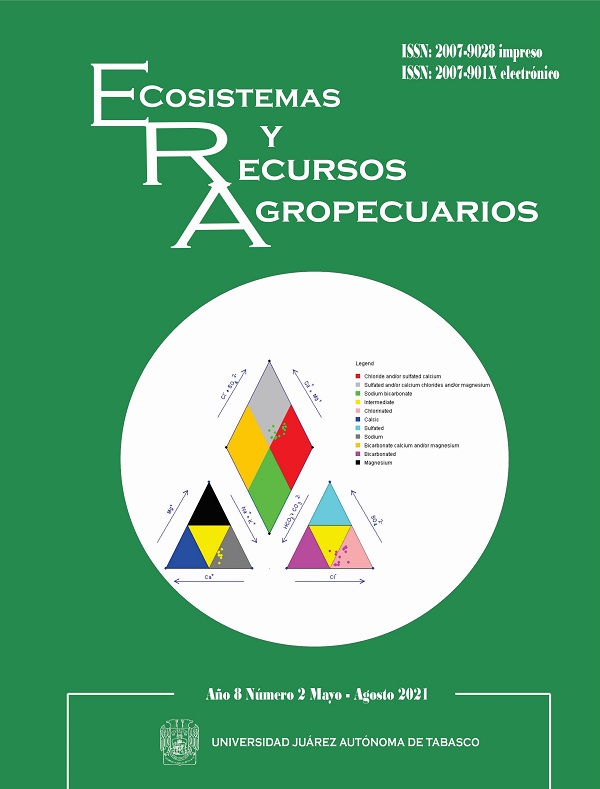Management in vitro of anthrachnosis (Colletotrichum acutatum Simmonds) in avocado through the use of botanical active principles
DOI:
https://doi.org/10.19136/era.a8n2.3038Abstract
Anthracnose is the disease caused by the phytopathogenic fungus of the genus Colletotrichum, that decreases quality and yield. The objective of this work was evaluated botanical active principles (PABs) for its control. The pathogen was isolated, the identification was made morphologically, the pathogen identity confirmation was carried out by
means of molecular technique (ITS-PCR). Later, in vitro tests were carried out with D-limonene, eucalyptol and β citronellol. Data was analyzed by
probit analysis, ANOVA and Tukey test (p ≤ 0.05). The mycelial growth, percentage of sporulation and germination of conidia were measured. The
Colletotrichum acutatum was identified. In the in vitro evaluation, β citronellol showed the greatest effectiveness in the different variables, with inhibition intervals of 29 to 89% in mycelial growth, from 61 to 100% in sporulation, and germination from 96 to 100%. Thus, β citronellol represents a botanical alternative in vitro for anthracnose control.
Downloads
Downloads
Published
Issue
Section
License
Copyright (c) 2021 Ecosistemas y Recursos Agropecuarios

This work is licensed under a Creative Commons Attribution-NonCommercial-ShareAlike 4.0 International License.
Aviso de copyright
Los autores que se envían a esta revista aceptan los siguientes términos:
una. Los autores conservan los derechos de autor y garantizan a la revista el derecho a ser la primera publicación del trabajo con una licencia de atribución de Creative Commons que permite a otros compartir el trabajo con un reconocimiento de la autoría del trabajo y la publicación inicial en esta revista.
B. Los autores pueden establecer acuerdos complementarios separados para la distribución no exclusiva de la versión del trabajo publicado en la revista (por ejemplo, en un repositorio institucional o publicarlo en un libro), con un reconocimiento de su publicación inicial en esta revista.
C. Se permite y se anima a los autores a difundir su trabajo electrónicamente (por ejemplo, en repositorios institucionales o en su propio sitio web) antes y durante el proceso de envío, ya que puede conducir a intercambios productivos, así como a una cita más temprana y más extensa del trabajo publicado. (Consulte El efecto del acceso abierto).


